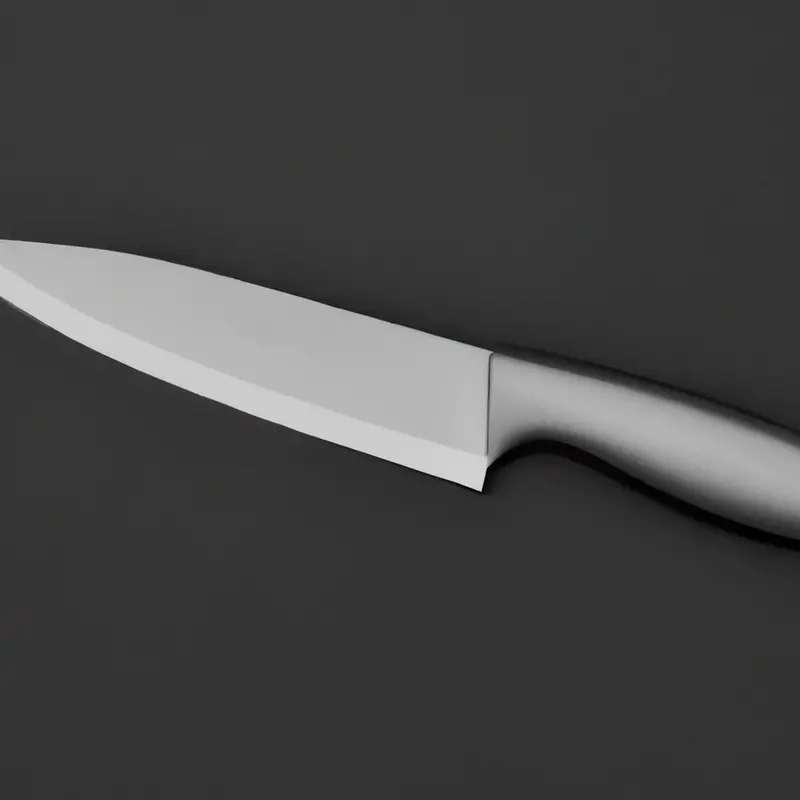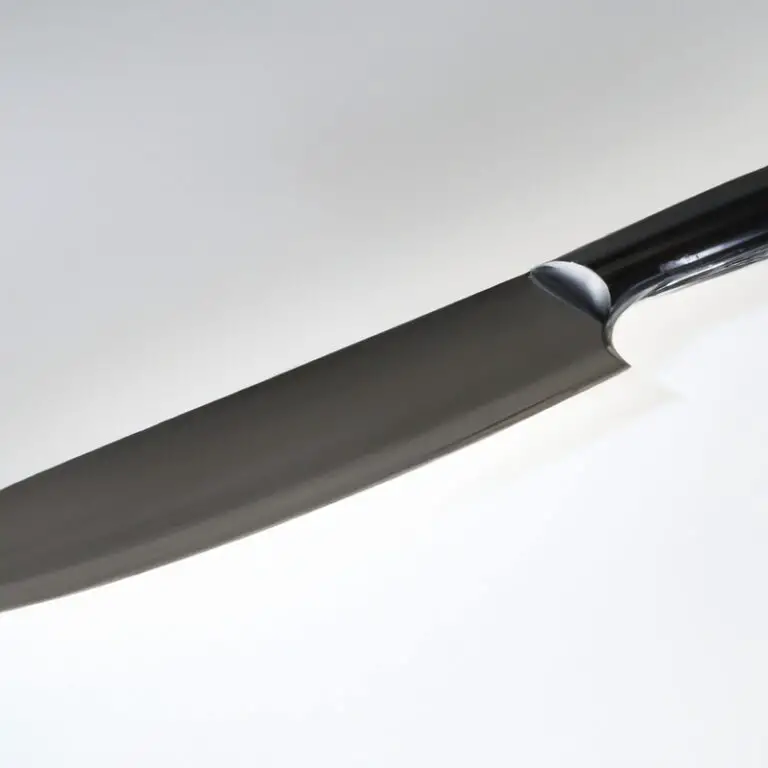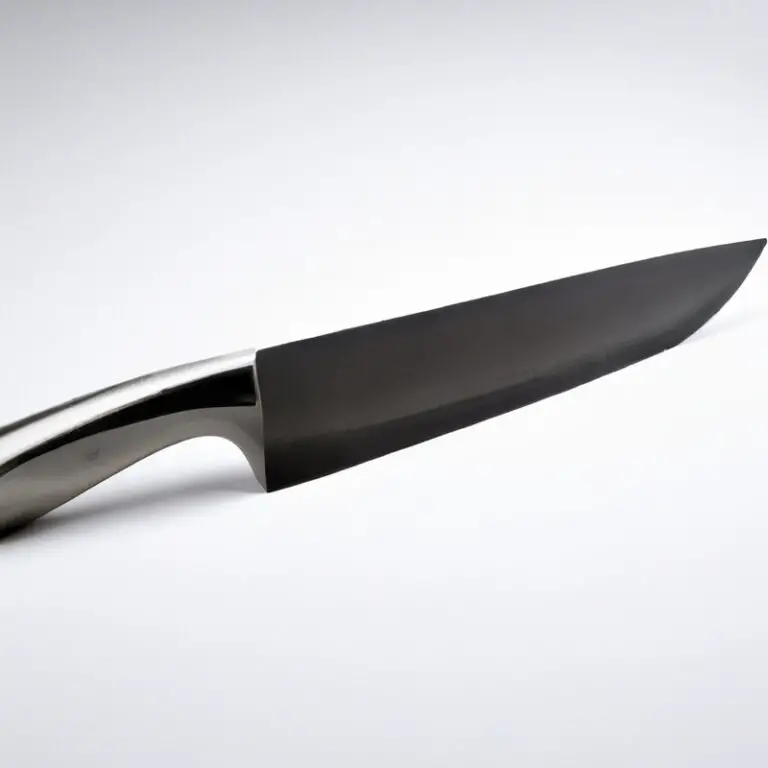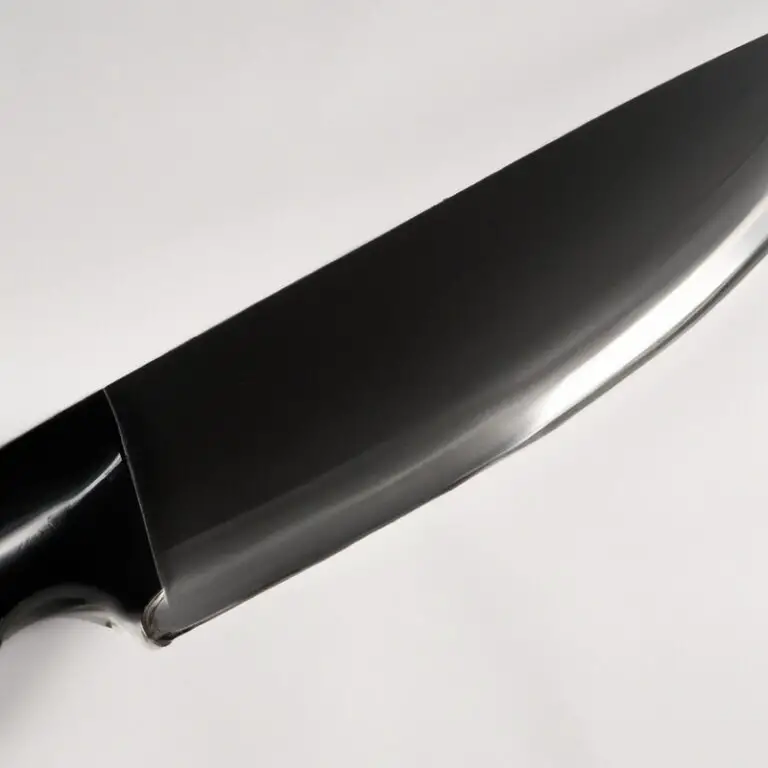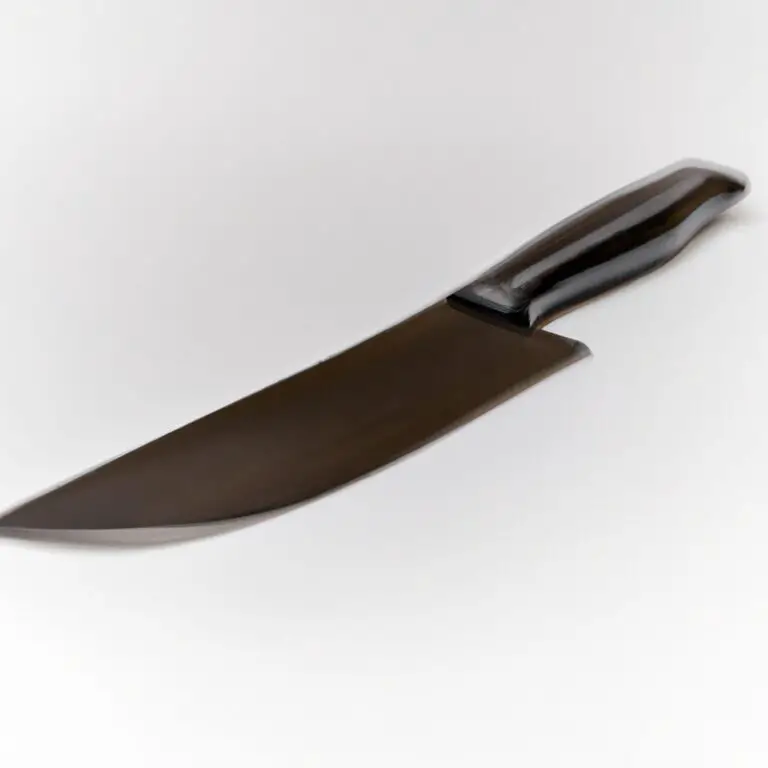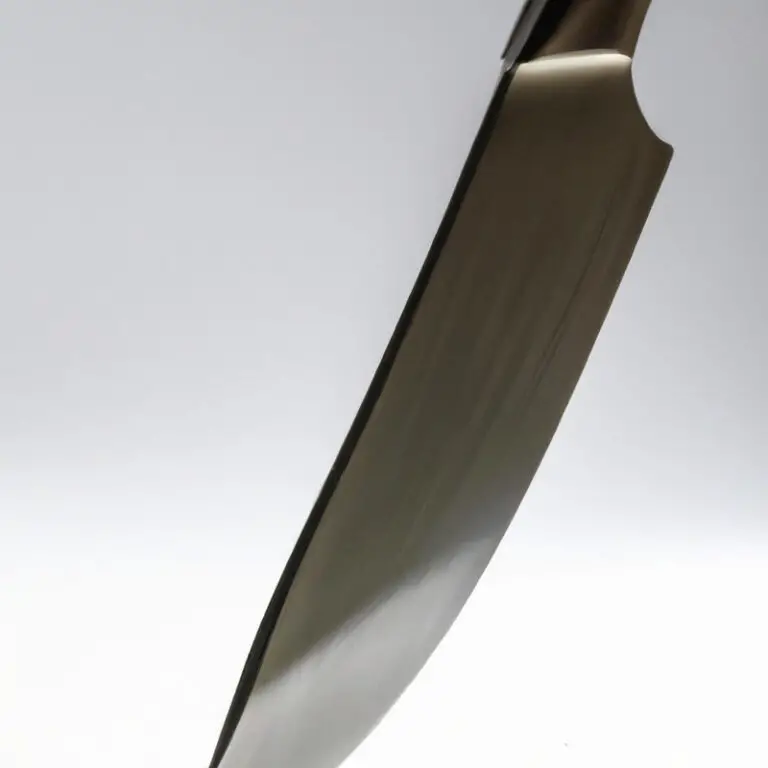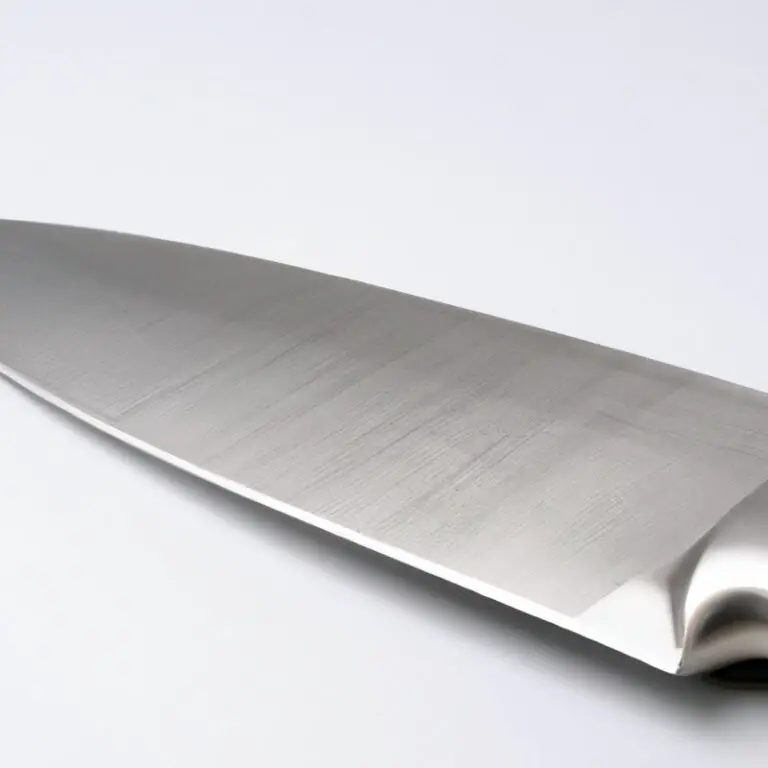How To Cut Thin Slices With a Santoku Knife? Slice Like a Pro
Key Takeaways:
- Hold the Santoku knife at a consistent angle and use a sawing motion to cut thin slices.
- Choose a Santoku knife with a sharp blade and ergonomic handle to ensure precision and comfort.
- Keep the food steady with a fork or your non-dominant hand while cutting to maintain control and safety.
- Practice makes perfect – with patience and practice, you can master the art of cutting thin slices with a Santoku knife.
Santoku knives can be a game-changer in any kitchen, especially when it comes to slicing thin cuts of meat or vegetables. However, using this Japanese knife can be tricky if you don’t know the proper technique.
As a professional chef, I’ve seen many amateurs struggle with it, leading to unevenly sliced ingredients and sometimes injuries.
So, if you want to avoid those mistakes and master the art of cutting thin slices with a Santoku knife, keep on reading! In this article, we’ll cover everything from holding the knife to choosing the right cutting board.
| Steps | Instructions |
|---|---|
| Grip | Hold the knife handle firmly with your dominant hand while using your other hand to steady the food item. |
| Angle | Place the Santoku knife at a 45-degree angle to the food item. |
| Slice | Cut with a gentle back and forth motion, moving the blade from the base to the tip. Use the entire length of the blade to cut through the food item. |
| Repeat | Repeat the slicing motion until all desired thin slices have been cut. |
Understanding Santoku Knives: A Quick Guide
Understanding Santoku Knives: A Quick Guide Santoku knives originated from Japan and have become increasingly popular worldwide due to their versatility and effectiveness in the kitchen. Unlike traditional Western chef’s knives, Santoku knives have a shorter and wider blade, making them ideal for tasks such as slicing, dicing, and chopping.
Santoku knives typically range in length from 5 to 8 inches and have a relatively flat edge, which enables them to be used for both straight and rocking cuts.
They also often have a hollow edge, which allows air to enter between the blade and food, reducing friction and preventing food from sticking to the blade. When choosing a Santoku knife, it is important to consider factors such as blade material, handle design, and blade thickness.
High-quality Santoku knives often have blades made of high-carbon stainless steel, which provides durability and resistance to staining and corrosion.
Maintaining the sharpness of your Santoku knife is crucial for effective thin slicing. To ensure sharpness, use a honing steel or sharpener regularly and avoid cutting on hard surfaces such as glass or ceramic.
A sharp blade will not only make thin slicing easier but also will improve your overall experience using the knife.
In summary, Santoku knives are an excellent tool for cutting thin slices. Understanding the unique characteristics and proper maintenance techniques of these knives will help you make your cooking experience more enjoyable and efficient.
Importance of Sharpness: How to Keep Your Santoku Knife Sharp
The sharpness of your Santoku knife plays a crucial role in achieving thin and precise cuts. A dull knife not only produces uneven slices but also increases the risk of injuries.
To keep your Santoku knife sharp, regularly hone it with a honing rod or sharpen it with a whetstone.
When using a honing rod, apply light pressure and maintain a consistent angle. If sharpening with a whetstone, start with a coarse grit and gradually move to a finer grit.
Avoid using a dishwasher and acidic or abrasive detergents to clean your knife as they can damage the blade.
Instead, gently handwash and dry the blade immediately after use. Remember, a sharp Santoku knife will not only enhance your cutting ability but also ensure your safety in the kitchen.
The Best Way to Hold a Santoku Knife for Thin Slicing
To hold a Santoku knife properly for thin slicing, grip the handle with your dominant hand. Your index finger and thumb should wrap around the handle, while the other three fingers rest on top of the handle.
Place your other hand on top of the blade, with your thumb resting on one side, and your index finger on the other.
Keep your fingers away from the cutting edge of the blade to avoid injury. Use a back-and-forth motion while slicing through the food item, making sure to keep the blade at a slight angle to achieve thin slices.
Remember to keep your wrists and arms relaxed for better control and precision.
By holding your Santoku knife correctly, you can slice through food items with ease and efficiency.
Proper Cutting Technique: How to Slice Thin Cuts with a Santoku Knife
To properly slice thin cuts with a Santoku knife, it’s important to use the correct technique. Begin by holding the knife properly, keeping your fingers curled and away from the blade.
Place the blade of the Santoku knife at a slight angle, positioning the tip on the cutting board.
Make sure your other hand holds the item you want to slice firmly in place on the board. Then, using a back-and-forth motion, slice through the item, keeping the blade at a consistent angle throughout the cut.
To make multiple thin cuts, repeat the process, keeping the knife sharp and your hands steady.
With practice, this technique will become natural, allowing you to slice precise, uniform pieces every time.
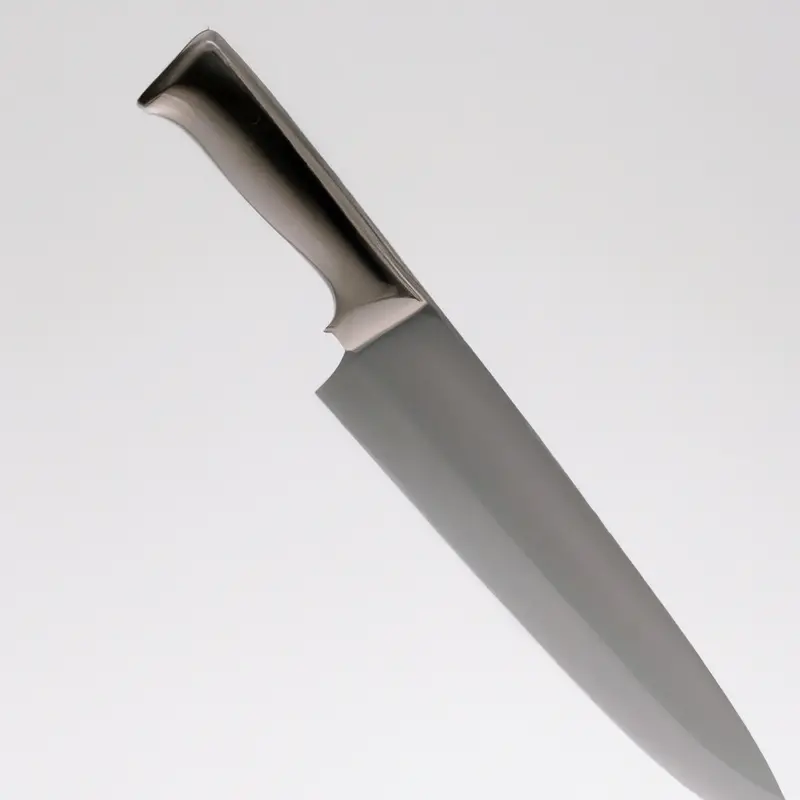
Mastering the Rocking Motion: Essential for Thin Slicing with a Santoku Knife
Mastering the rocking motion is essential for thin slicing with a Santoku knife. This motion involves using a gentle back and forth rocking motion as you slice through the food.
The blade should be in constant contact with the surface of the cutting board to achieve a clean and uniform cut.
To practice the rocking motion, start by placing the tip of the knife on the cutting board and shift your weight to the heel of the knife. Then, gently rock the blade back and forth, maintaining contact with the board as you slice through the food.
It’s important to keep your fingers safely tucked away from the blade and to use your non-dominant hand to hold the food in place as you slice.
With practice, you’ll master the rocking motion and be able to effortlessly cut thin slices with your Santoku knife.
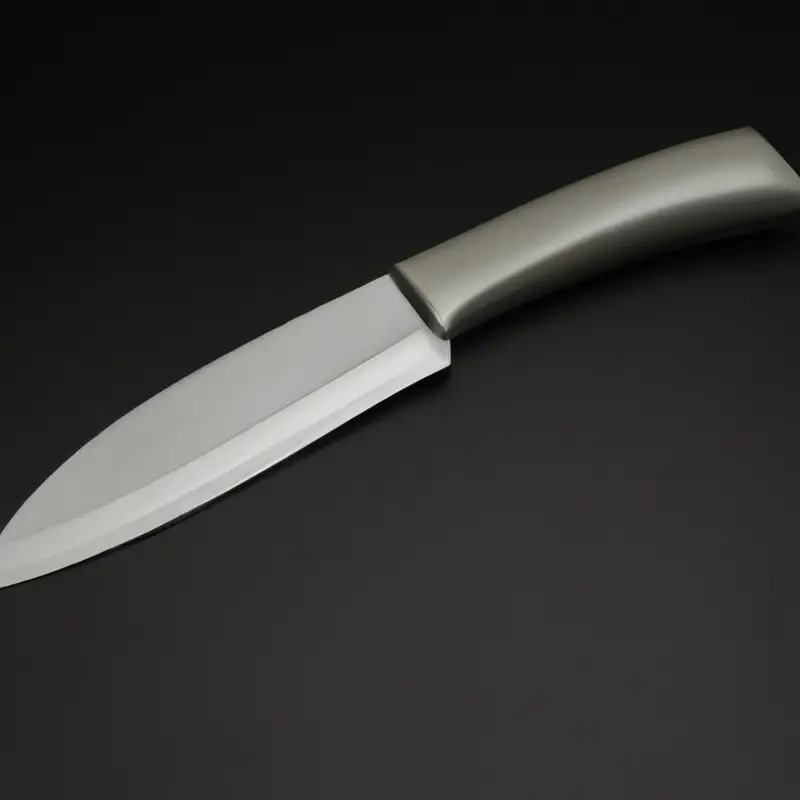
Choosing the Right Cutting Board for Your Santoku Knife
When it comes to choosing the right cutting board for your Santoku knife, there are a few things to consider to ensure you get the best results. Firstly, the cutting board should be made of a material that is not too hard and won’t dull your knife quickly.
Good choices include wood, plastic, and bamboo.
Avoid glass cutting boards as they can damage your knife’s edge. The size of the cutting board should be large enough to comfortably hold your ingredients while leaving enough room to move your knife around.
A larger size gives you more space to work with and reduces the risk of your ingredients falling off the board.
Another factor to consider is the board’s stability. Choose a board that doesn’t slide around during use.
Some boards come with rubber feet to prevent slipping.
But if your board does not have such features, placing a damp kitchen cloth underneath it can help keep it steady. Lastly, keep different types of cutting boards for different types of ingredients.
For instance, have one board for meat, one for vegetables and one for fruits to prevent cross-contamination.
In summary, when choosing a cutting board for your Santoku knife, consider the material, size, stability, and hygiene needs. A good cutting board can help improve your thin slicing cutting technique with a Santoku knife.
Safety First: Tips to Avoid Injuries while Using a Santoku Knife
When using a Santoku knife, it’s essential to prioritize safety to avoid injuries. Here are some tips to keep in mind:
- Always keep your fingers away from the blade; never place them in its path.
- Use a cutting board with a non-slip surface to prevent the knife from slipping and injuring yourself.
- Cut slowly and steadily, avoiding quick motions that could lead to accidents.
- Use a firm grip on the knife to avoid dropping it while cutting.
- Keep the knife blade sharp to avoid it slipping while cutting; dull blades require more force, increasing the risk of hurting yourself.
- Store the knife in a knife block or storage rack to prevent accidental cuts while looking for it in a drawer.
By following these simple tips, you can ensure your safety while slicing thin cuts with a Santoku knife.
How to Clean and Store Your Santoku Knife
To maintain the sharpness and longevity of your Santoku knife, it’s essential to clean and store it properly. After each use, rinse the knife under running water and wipe it dry with a soft cloth.
Avoid using harsh detergents or scrubbers that can damage the blade.
It’s best to store your Santoku knife in a wooden block, magnetic strip, or special knife sheath to prevent it from dulling or getting damaged. Avoid storing it along with other utensils or in a drawer where it can rub against other objects.
When storing, make sure the blade is covered and the edge isn’t exposed.
Before placing it in storage, make sure the knife is completely dry to prevent rust or corrosion. Regularly sharpen and maintain the blade of your Santoku knife to avoid dullness and damage, and store it properly to prevent accidents and ensure longevity.
Experimenting with Different Styles of Santoku Knives for Thin Slicing
Experimenting with different styles of Santoku knives can help you achieve the perfect thin slice. One of the key factors to consider is the blade width.
A wider blade, such as a 7-inch Santoku knife, is better suited for slicing larger ingredients like meat, while a smaller, 5-inch blade is ideal for smaller tasks like slicing herbs or vegetables.
Another aspect to consider is the blade material. Santoku knives are typically made of high carbon stainless steel or ceramic.
High carbon stainless steel is durable and can maintain a sharp edge, making it ideal for slicing tasks.
Ceramic blades are lightweight and sharp but are more brittle and can chip if not handled properly. Santoku knives also have different edge styles, such as a straight edge or a granton edge.
A straight edge is better suited for slicing soft fruits and vegetables, while a granton edge is designed to reduce friction and prevent food from sticking, making it ideal for slicing meat and fish.
Ultimately, the best Santoku knife for thin slicing depends on your personal preferences and the ingredients you plan to slice. Experiment with different styles and sizes to find the one that works best for you.
Common Mistakes to Avoid when Cutting Thin Slices with a Santoku Knife
Common Mistakes to Avoid when Cutting Thin Slices with a Santoku Knife:
- Forgetting to sharpen the knife regularly: A dull knife will lead to uneven cuts, making it hard to slice thin and even.
- Holding the knife incorrectly: Holding a Santoku knife by the handle alone will lead to a lack of control, making it harder to slice thin.
- Failing to use the full blade length: The entire length of the blade should be used when slicing thin, so that the cut is linear and even.
- Cutting with a flat blade angle: Cutting with a flat blade angle will end up tearing the food, instead of cutting cleanly, causing uneven slices.
- Pressing down too hard: Over-pressing can damage the knife blade and lead to uneven cuts.
- Using the wrong cutting board: Using the wrong surface to cut on will dull the knife quickly, leading to uneven, jagged cuts.
- Cutting too quickly: Rushing the process with fast slicing can cause uneven and irregular slices, resulting in unsightly results.
Avoiding these common mistakes will help to ensure that your Santoku knife works efficiently, and you’re left with beautiful, thin and even slices for your meals.
Final Verdict
Cutting thin slices with a Santoku knife requires mastery of the right technique, holding the knife properly, and maintaining sharpness. The rocking motion is essential for precision, and choosing the right cutting board can help prolong the knife’s life.
It is crucial to prioritize safety and to adopt the right cleaning and storage practices.
Experimenting with different styles of Santoku knives can help improve your cutting skills. It is essential to avoid common mistakes when using a Santoku knife correctly.
By following the tips presented in this guide, you can slice delicate meats and vegetables effortlessly.
As a result, you will not only save time and effort but also enhance the presentation and taste of your dishes.

